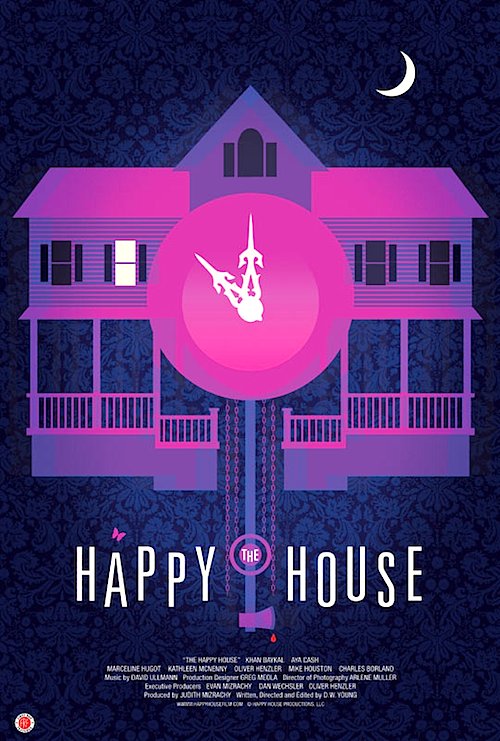By Joe Bendel. This must have been a hard pitch. One would suspect Henry James’ novel of narcissistic, self absorbed parents of privilege would hit close to home for many decision-makers working in the movie business (studio or indie, it hardly matters anymore). Yet somehow, the poor little rich girl will indeed wrestle with her parental issues in Scott McGehee & David Siegel’s What Maisie Knew, which opens tomorrow in New York.
Beale and Susanna are Maisie’s parents, if we can really use that word. He is a dodgy art dealer and she is an over-the-hill rock star angling for a comeback. Both are more interested in their careers than their daughter. When they think of Maisie, it is mostly as a potential club to bludgeon each other with during their divorce proceedings.
Since he is able to present a more stable front, Beale wins considerable custody rights. However, this is not all bad. He is also taking her nanny Margo as his trophy wife. She actually cares about Maisie, willingly giving her the time and attention she cannot get from her parents. Meanwhile, Susanna marries the working class Lincoln, apparently to have a live-in sitter for Maisie. Like Margo, he quickly develops a paternal affection for his step-daughter that the ragingly insecure Susanna perversely resents. Hmm, does anybody see the potential building blocks of a more functional family unit in here somewhere?
 Poor Mrs. Wix. Maisie’s frumpy second nanny really gets the shaft from screenwriters Nancy Doyne and Carroll Cartwright’s adaptation. While the James novel rebukes the shallow indulgence he considered endemic in society, McGehee and Siegel’s WMK seems to suggest blonds make better parents. The proceedings are also marked by a heightened class consciousness, with the nanny and bartender showing superior character than Maisie’s privileged biological parents.
Poor Mrs. Wix. Maisie’s frumpy second nanny really gets the shaft from screenwriters Nancy Doyne and Carroll Cartwright’s adaptation. While the James novel rebukes the shallow indulgence he considered endemic in society, McGehee and Siegel’s WMK seems to suggest blonds make better parents. The proceedings are also marked by a heightened class consciousness, with the nanny and bartender showing superior character than Maisie’s privileged biological parents.
Regardless of what James might think of his novel modernized and transported to New York, McGehee and Siegel have an unbeatable trump card in their young lead. As Maisie, Onata Aprile is completely unaffected and wholly engaging. She covers a wide emotional spectrum, carrying the audience every step of the way.
Likewise, Joanna Vanderham is charismatic and surprisingly vulnerable as Margo, while Alexander Skarsgård’s understated nice guy Lincoln is likable enough. Julianne Moore labors valiantly to humanize the self-centered and psychologically erratic Susanna, but Steve Coogan is largely stuck playing a caricatured straw-man as the arrogant Beale.
Maisie’s cast and co-director definitely stack the deck, but at least they do it thoroughly and compellingly. Viewers will absolutely care about the bright and precociously self-aware Maisie, which is the acid test for any film focused on a young protagonist. The upscale New York locations also add a dash of élan. Anchored by several well turned performances, What Maisie Knew is surprisingly satisfying. Recommended kind of affectionately for fans of literary melodrama, it opens tomorrow (5/3) in New York at the Angelika Film Center.
LFM GRADE: B+
Posted on May 2nd, 2013 at 11:31am.

